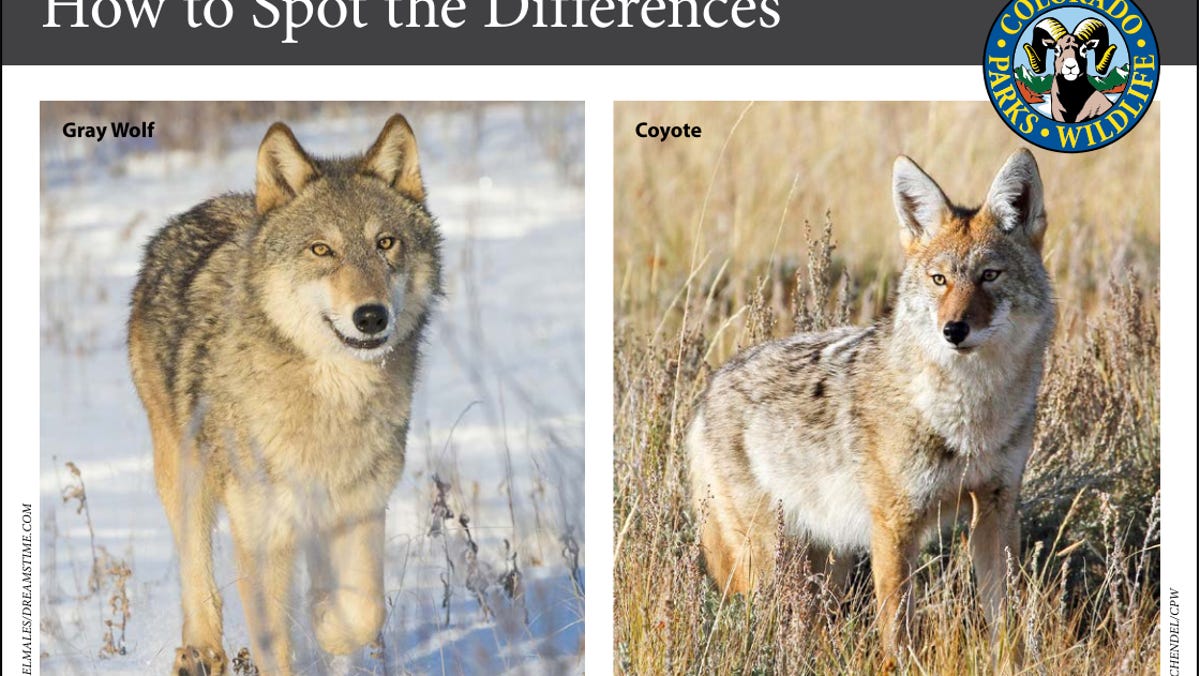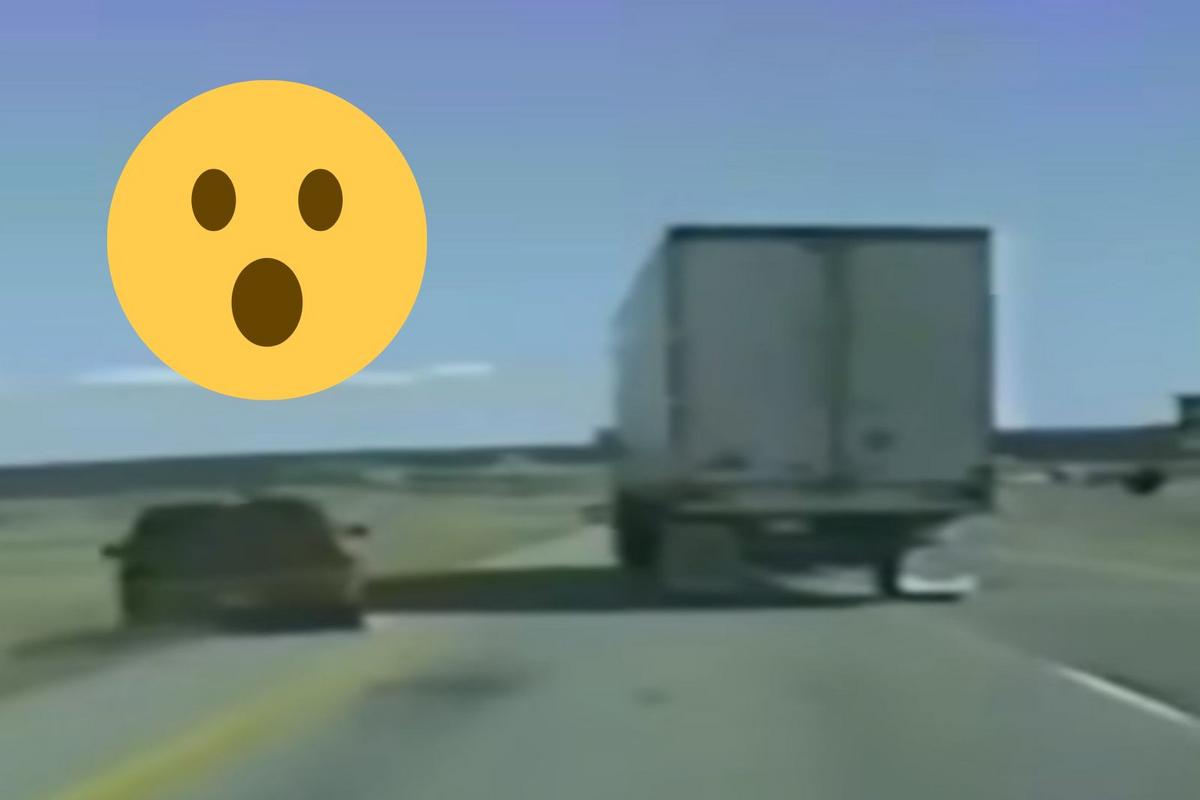Colorado
More food, fewer conflicts: Colorado bear encounters dropped in 2023 due to better forage

The number of conflicts between people and bears reported in Colorado dropped by 15% in 2023 thanks to sufficient natural food sources, state wildlife officials said Monday.
Colorado Parks and Wildlife received 3,526 reports of sightings and conflicts with bears in 2023, down from 4,147 reports in 2022, the agency said in a news release.
Wildlife officers relocated 33 bears and euthanized 63 bears last year, the lowest number of euthanasias in at least eight years, according to previous reporting.
Colorado is home to an estimated 17,000 — 20,000 bears, and the biggest cause of conflict with humans is still bears trying to access human food and trash.
Approximately 51% of bear encounters reported in Colorado last year resulted in property damage to a shed, garage, home, vehicle or fence, according to Colorado Parks and Wildlife.
Of those reports, 92% were linked to some kind of “attractant” like trash, livestock, chickens, beehives, bird seed, pet food, grills, coolers or refrigerators, agency officials said.
“These conflicts could all easily be reduced if the public takes some simple steps around their homes and properties to prevent bears from accessing them,” state officials said in a news release Monday.
Nature also plays a role in the amount of bear activity Coloradans see every year, with drought and late freezes impacting natural food sources and driving them to seek food in more urban areas.
While a late freeze and drought impacted food sources in some areas of the state in 2022, most of the state saw warm enough temperatures and enough precipitation this year to produce enough natural forage for bears.
The northwest region saw the largest decline in bear conflicts, but wildlife officials noted “an unreasonable number” of bears were still reported entering homes, according to the agency.
Reporting bear activity helps wildlife officers intervene early to haze bears and educate the community, which can prevent bears from needing to be euthanized, Colorado Parks and Wildlife officials said in a news release.
Colorado counties with the biggest share of bear encounters include Pitkin County with 429 reports, El Paso County with 272 reports, Boulder County with 270 reports and Jefferson County with 200 reports.
Get more Colorado news by signing up for our daily Your Morning Dozen email newsletter.

Colorado
Colorado students reject offer from Denver’s Auraria Campus in pro-Palestinian demonstration

Students who are occupying Denver’s Auraria Campus quad to protest the war in Gaza rejected an offer from their schools.
The offer would have donated thousands of dollars to the International Red Cross if they had taken down the tents. The offer was the school’s attempt to clear the growing encampment that’s been there for a week with graduation ahead.
While the war in Gaza continues, students in Fort Collins, Pueblo, Denver and Boulder are demanding that schools cut academic and financial ties with groups that are connected to Israel’s military. That includes study abroad programs with the country, along with investments in companies that conduct business with the Israeli military.
“We’re in absolute support of your right to free speech, your right to assemble,” said Auraria Campus CEO Colleen Walker, who initially enforced the campus’s camping ban.
CBS News Colorado Reporter Alan Gionet was at the campus moments after the students rejected the offer and says, nearly an hour after the deadline, no one took down a tent.
A group of donors reportedly came forward with a nonpartisan humanitarian solutions that included $15,000 in the name of Students For Democratic Society donated to the International Red Cross, but only if the encampment was taken down by 5 p.m. Thursday, which was rejected swiftly by the students.
“The students are well aware that they are in violation of our no camping policy. They have had 20, what I would call — successful protests since October. They followed the rules then; they’re well aware of those rules,” said Walker. “They also as a student organization they know how to rent out spaces here on campus. How to reserve spaces for their events. So they’re ignoring both of those aspects.”
Members of the Students For Democratic Society had more calls for resistance and reiterated how they want their original demands fulfilled.
Gionet also described the scene and he says that no police were on the scene after the deadline as the stalemate continues.
Pro-Palestinian demonstration grows on Denver’s Auraria campus with graduation 1 week away
Colorado
Bill originally meant to ban ‘prone restraint’ for Colorado officers passes with new purpose

DENVER (KKTV) – A bill in Colorado that was originally intended to ban “prone restraint” for officers, outside of cases in which the use of deadly physical force is justified, passed the Senate and now has a new purpose.
HB24-1372, Regulating Law Enforcement Use of Prone Restraint, is headed to the governor’s desk as of Thursday morning. Following amendments, if signed into law the bill would require that law enforcement agencies adopt, and publish on their website, a written policy regarding the use of prone restraint. The policy must include when medical aid must be requested or rendered after the use of prone restraint. Prone restraint means a person is laid in the facedown position by someone else.
“In many circumstances, prone restraint is a tactic used safely by law enforcement and does not lead to harmful outcomes. However, when misused, it can lead to serious injury and even death, and one death is too many,” said Rep. Julie Gonzales. “Officers are already trained on the appropriate use of the tactic, but outliers unfortunately occur. This bill codifies best practices for the use of prone restraint, promoting safety for community members who are placed in it, and the law enforcement officers who deploy it, while extending currently existing liability to officers who misuse it.”
Under the bill, law enforcement agencies would be required to adopt a policy on the use of prone restraint by July 1, 2025, and the Peace Officer Standards and Training Board would be required to make a training on the use of the prone position available to law enforcement agencies. By July 1, 2026, law enforcement agencies would be required to implement and train peace officers on the provisions of their adopted policies and procedures.
Many law enforcement officials opposed the original purpose of the bill. 11 News has reached out to several agencies to see if their chiefs agree with the way the bill is currently written.
Copyright 2024 KKTV. All rights reserved.
Colorado
Colorado has more wolves, but would you know one if you saw one? Here is what to know

Colorado releases wolves from Oregon
Colorado Parks and Wildlife captured 10 wolves in northeast Oregon and released them in Grand and Summit counties in late December 2023 as the initial stage of its reintroduction plan.
Confirmation of dead wolves in Larimer and Elbert counties in recent weeks has only heightened public awareness that wide-wandering wolves can show up anywhere in Colorado.
Colorado Parks and Wildlife has received hundreds of calls and wolf sighting reports in recent years.
Those sightings could increase this summer, as Colorado has more wolves on the landscape after reintroducing 10 in late December in recreation-heavy Grand and Summit counties, and as the weather warms and more people head outdoors to recreate.
Still, your chances are slim to see a wolf but here are things you should know about wolves and recreating:
Could you distinguish between a wolf and coyote? They look similar. Here are telltale differences
Here are the differences, according to Colorado Parks and Wildlife:
- Wolves are about twice the size of coyotes. However, smaller wolves can be about the same size as larger coyotes.
- Wolves can measure up to 6 feet in length, including the tail, and stand approximately 30 inches in height at the shoulder. Females usually weigh 70 to 80 pounds, while males weigh 95 to more than 100 pounds.
- Coyotes typically measure up to 4 feet in length, including tail, and stand closer to 18 inches in height at the shoulder. They generally weigh 15 to 45 pounds.
- Wolves have larger and blockier snouts/muzzles and shorter and more rounded ears than coyotes, which have longer, narrower features.
- Wolves have distinctively bushier and shorter tails than coyotes.
- Wolf tracks are about 5 inches long by 4 inches wide, with four symmetrical toes and identifiable claws.
- Coyote tracks are similar but are about half that size.
- Wolf track paths usually show a direct, purposeful route.
How to report a wolf sighting and what to include in the report
Colorado Parks and Wildlife has a wolf sighting form and receives hundreds of reports and calls a year with people claiming to have seen a wolf.
The agency received six confirmed wolf sightings between 2004 and 2019. The latter year was when what became the breeding female of the North Park pack was discovered in Jackson County.
Since that breeding female and male naturally migrated into Jackson County and gave birth to six pups in spring of 2021, confirmed sightings have increased.
The agency encourages reporting of wolf sightings.
Here are important elements when reporting a sighting:
- Clear video and/or photos, while making sure to keep a safe distance.
- Photograph or video the tracks and measure them, placing an easily identifiable object next to the tracks.
What to do if you and your pet encounter a wolf
Wolves pose little risk to humans but some risk to dogs, which they see as competition for prey and as encroaching on their territory.
Here are safety tips when recreating:
- Make lots of noise if you come and go when wolves are most active — dusk to dawn.
- Dogs should be leashed or under strict voice control while recreating.
- Bear spray can be effective in warding off an attack.
- Keep dogs close to your home during the day and bring them inside at night.
In the extremely rare case that you encounter a wolf:
- Keep visual contact with the animal.
- Keep your dog away from the wolf.
- Face the wolf but slowly move away (don’t run or bend down) to seek shelter.
- If it approaches you, make yourself look larger by raising your hands, make loud noises and wave an object such as a hiking stick in front of you.
- If attacked, fight back using your fingers or sharp objects on the wolf’s most sensitive areas, including underbelly, face and eyes.
Where might you encounter a wolf in Colorado?
The reintroduction of wolves has increased their presence in Colorado and wolves wander widely.
Confirmed sightings of naturally migrating and released wolves stretch from the West Slope to the Eastern Plains.
A dead wolf was discovered in Larimer County on April 18.
The wolf found dead in Elbert County in eastern Colorado on April 3 was discovered through blood samples to have wandered from Michigan or Wisconsin.
The highest concentration of wolves remains in the general vicinity of their initial release sites in Grand and Summit counties. That is where the majority of recent wolf depredations on livestock have taken place.
Colorado Parks and Wildlife has released four monthly wolf activity maps showing watersheds in which its 12 wolves (11 after the deceased wolf in Larimer County) were detected travelling via pins from their GPS tracking collars.
The latest map recorded wolf movements March 26 through April 23. That map showed notable movement of a wolf or wolves in Larimer County, expanding eastward in watersheds encompassing roughly the western three-fourths of Larimer County. Those watersheds include one that reaches just east of U.S. Highway 287 north of Fort Collins and another south to U.S. Highway 34 west of Loveland.
It’s important to note with the watershed map that watersheds can be quite large. Also, if a collar or collars pings in a watershed, the entire watershed is marked as having a wolf or wolves in it at some point in the last month. It does not necessarily mean a wolf or wolves are currently in those areas.
-

 News1 week ago
News1 week agoLarry Webb’s deathbed confession solves 2000 cold case murder of Susan and Natasha Carter, 10, whose remains were found hours after he died
-

 World1 week ago
World1 week agoHaiti Prime Minister Ariel Henry resigns, transitional council takes power
-

 News1 week ago
News1 week agoFirst cargo ship passes through new channel since Baltimore bridge collapse
-

 World1 week ago
World1 week agoUS secretly sent long-range ATACMS weapons to Ukraine
-

 World1 week ago
World1 week agoSpanish PM Pedro Sanchez suspends public duties to 'reflect'
-

 News1 week ago
News1 week agoAmerican Airlines passenger alleges discrimination over use of first-class restroom
-

 World1 week ago
World1 week agoAsia bears biggest climate-change brunt amid extreme weather: WMO
-

 Movie Reviews1 week ago
Movie Reviews1 week agoHumane (2024) – Movie Review





















